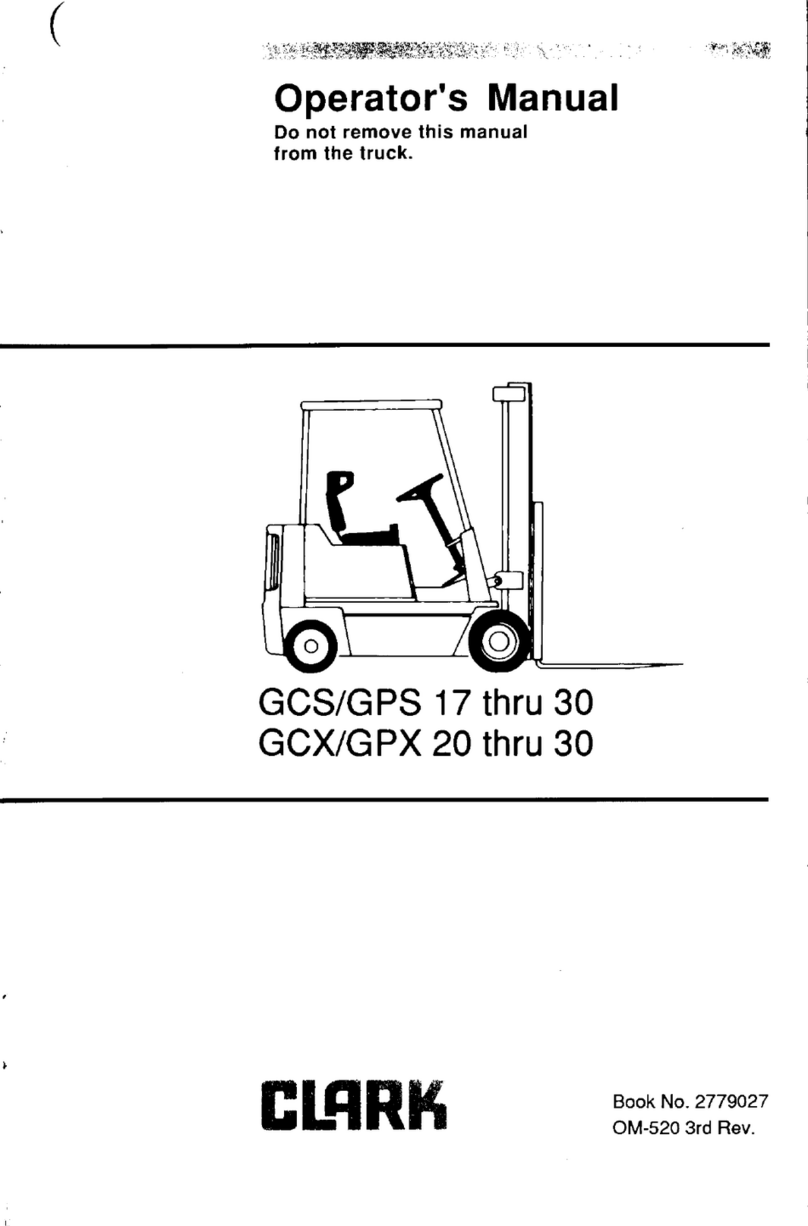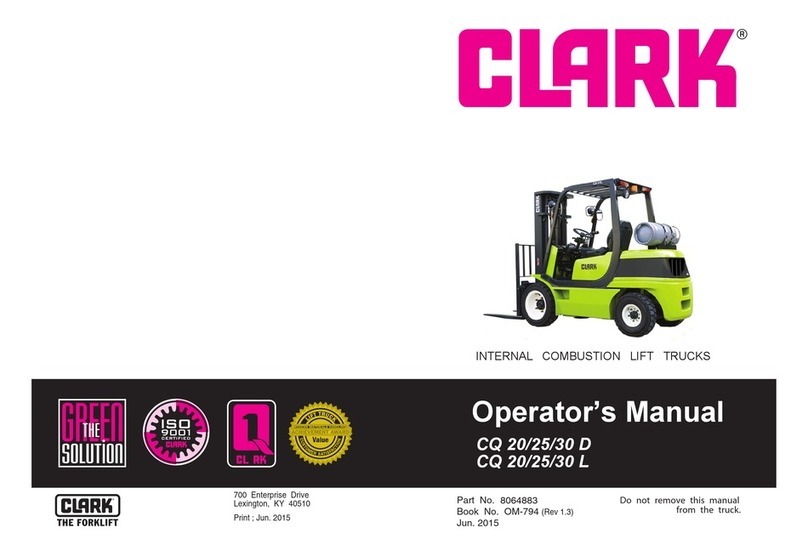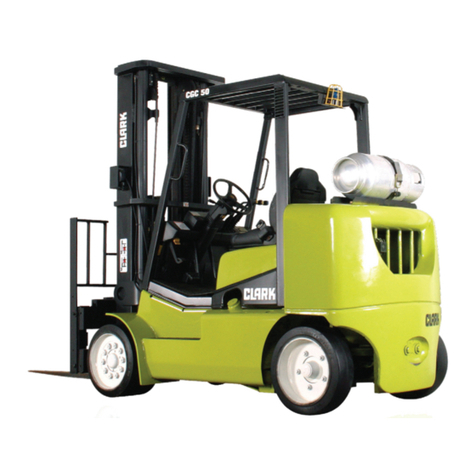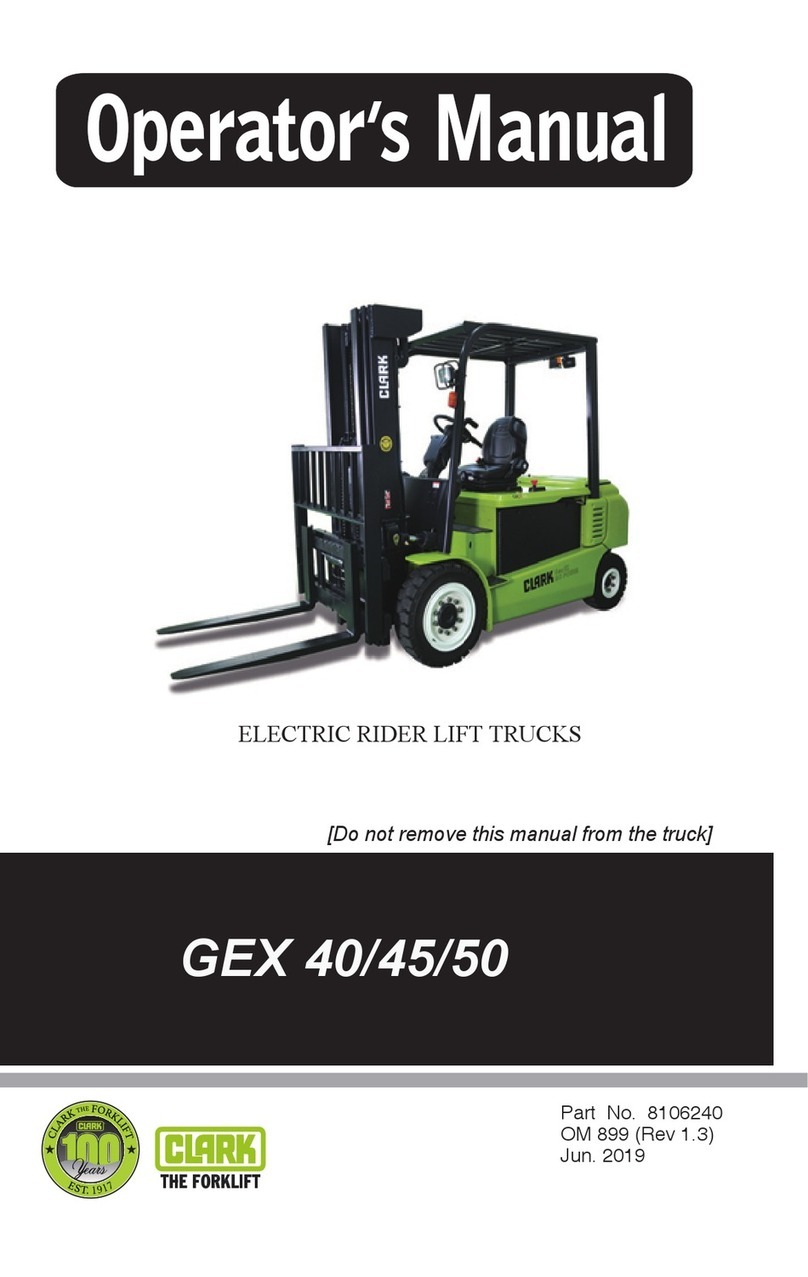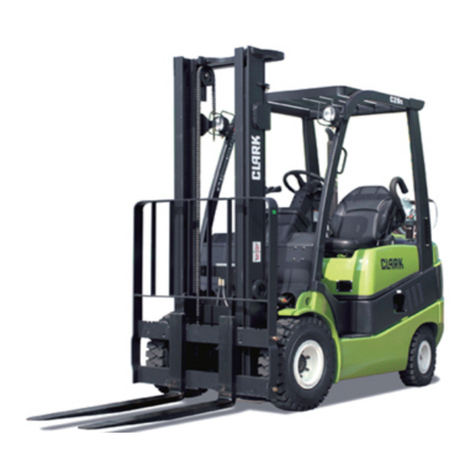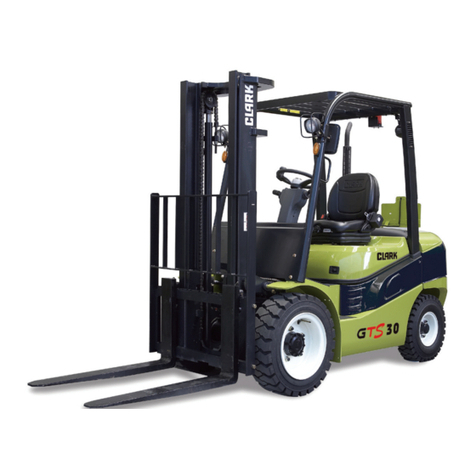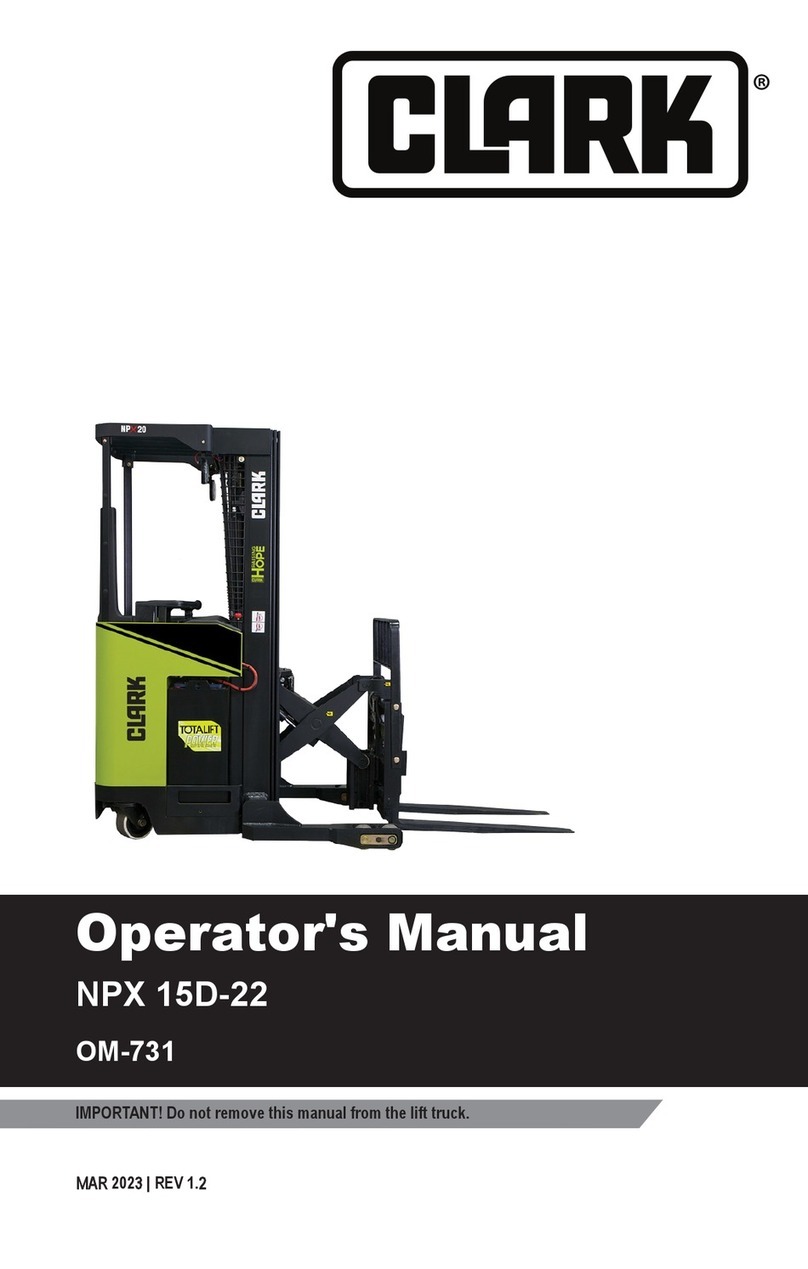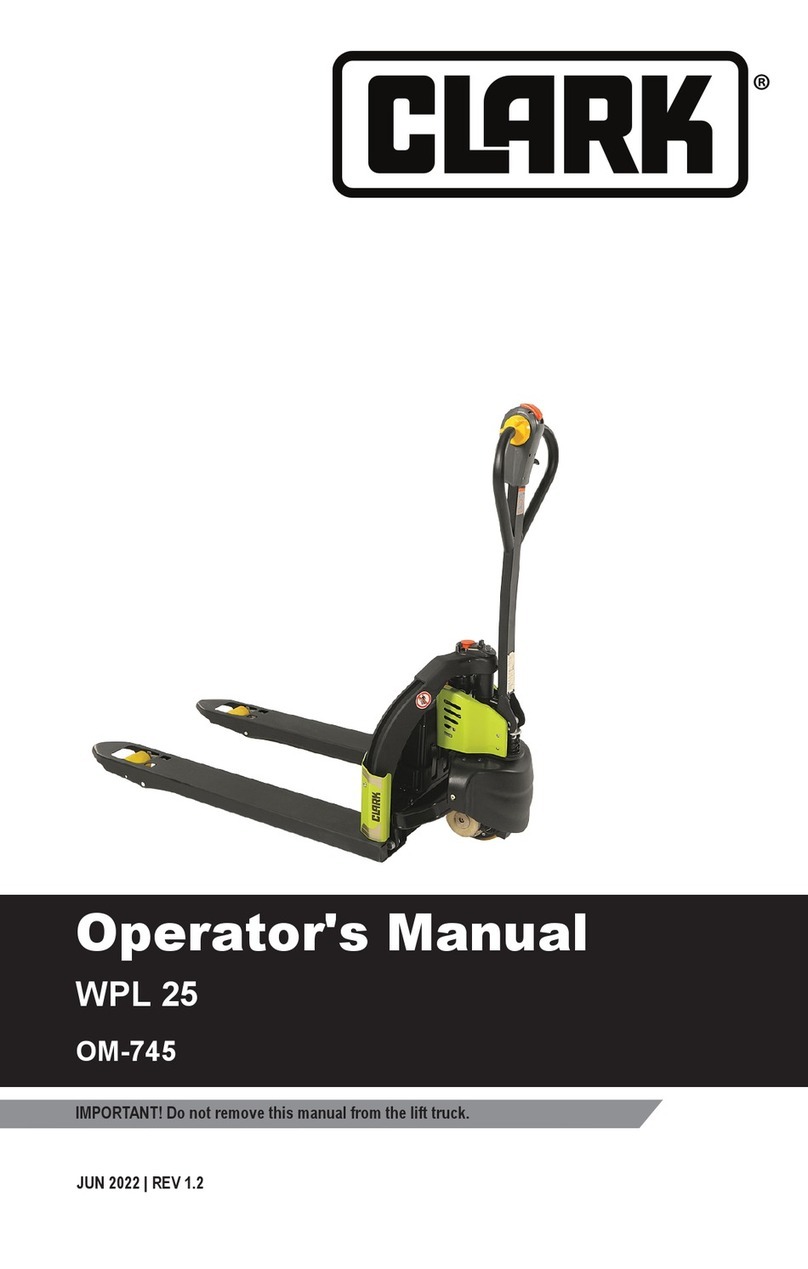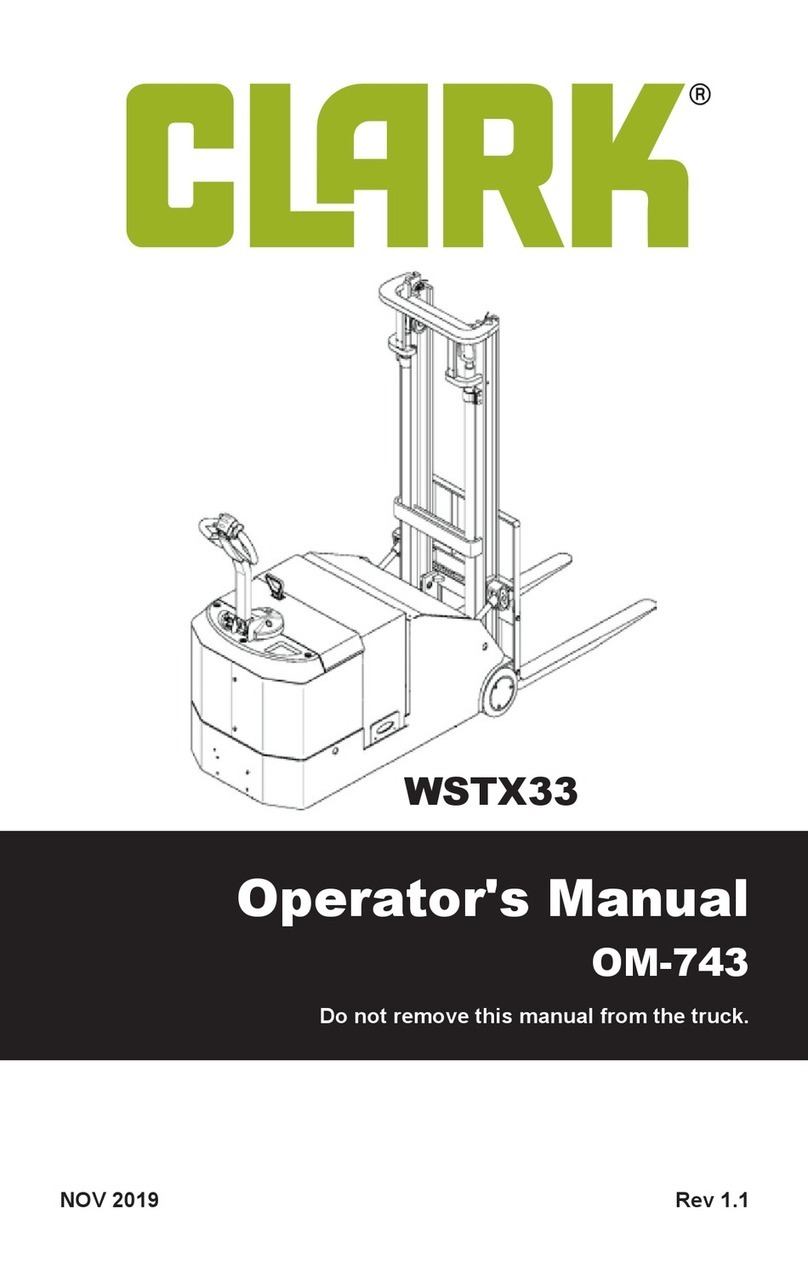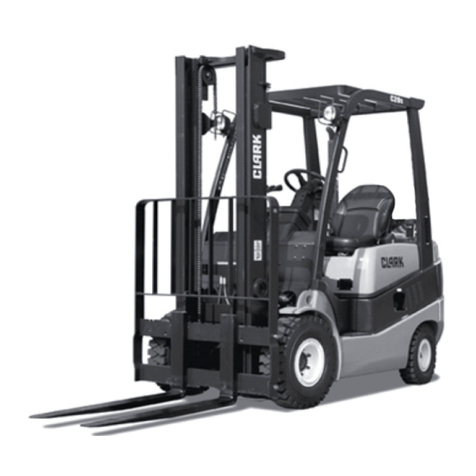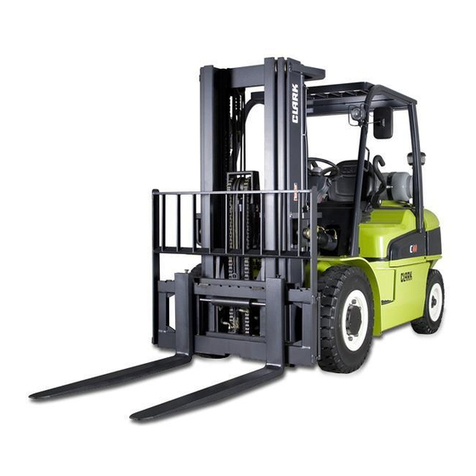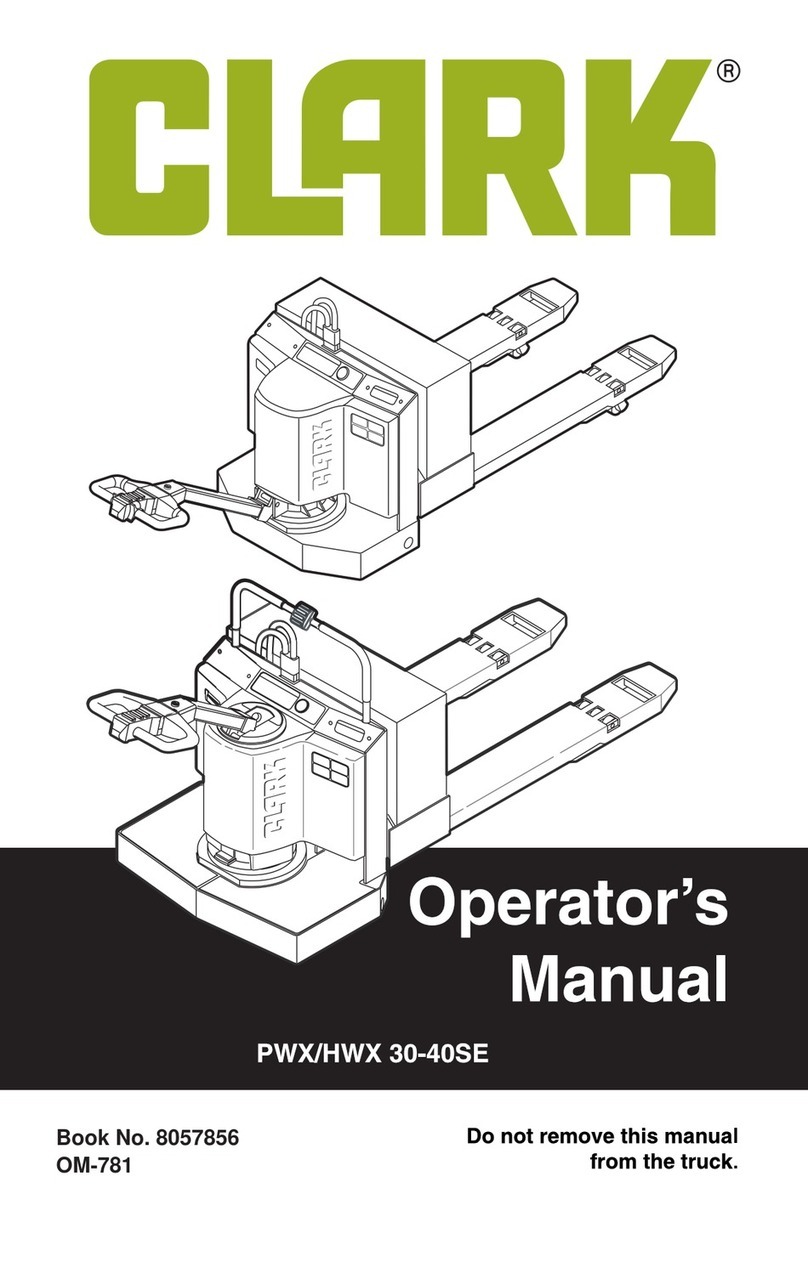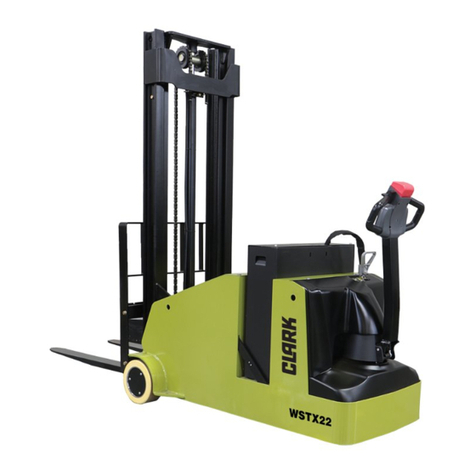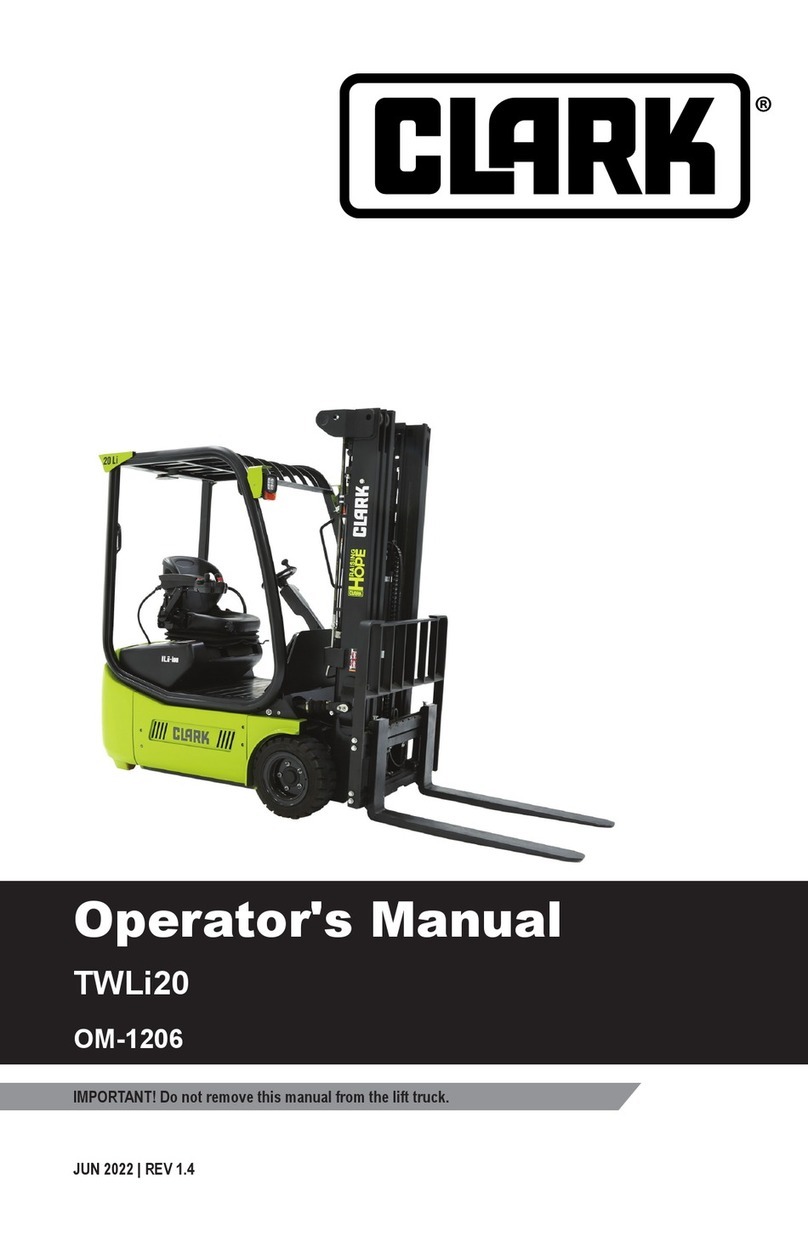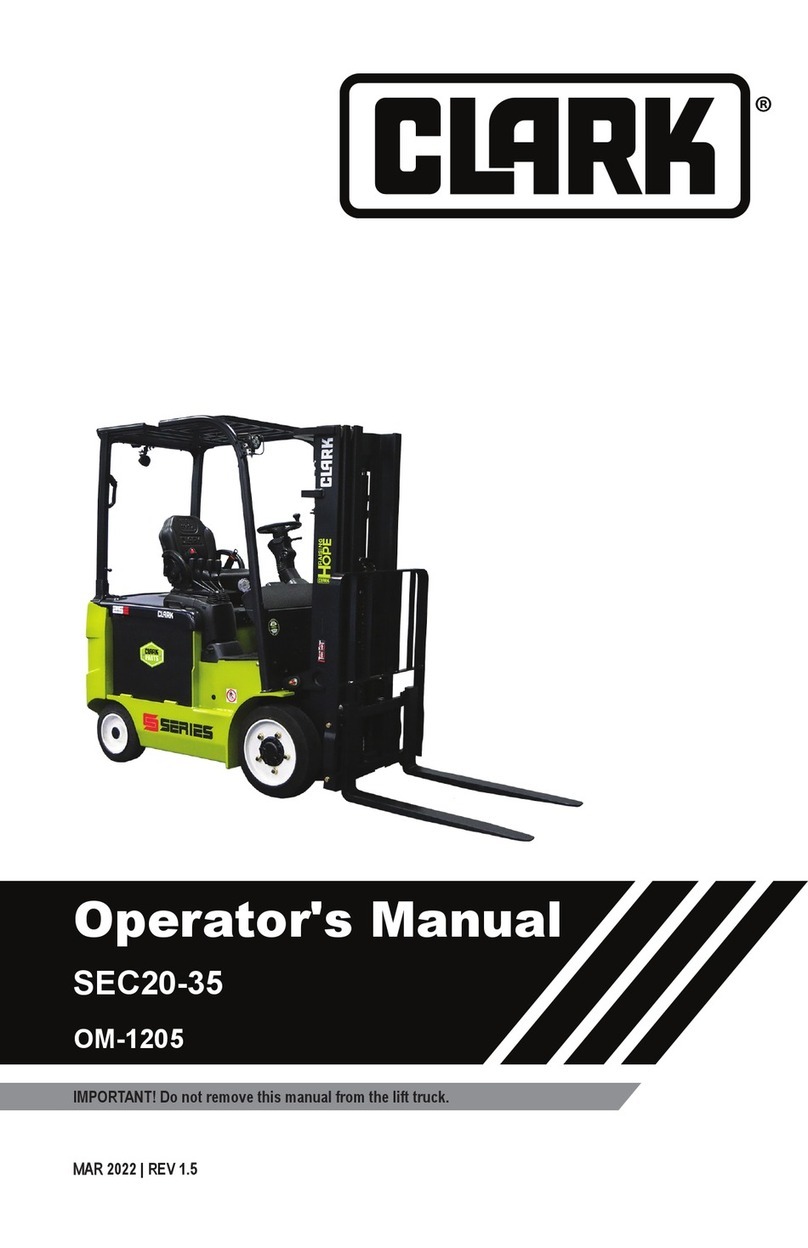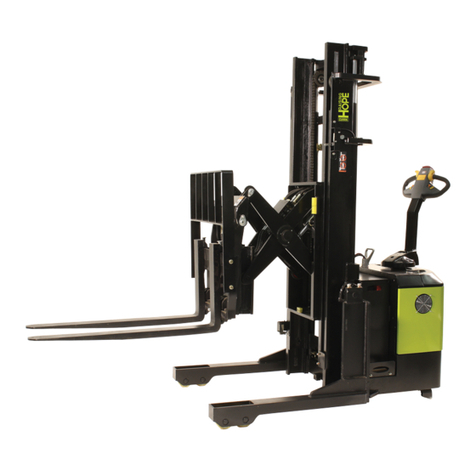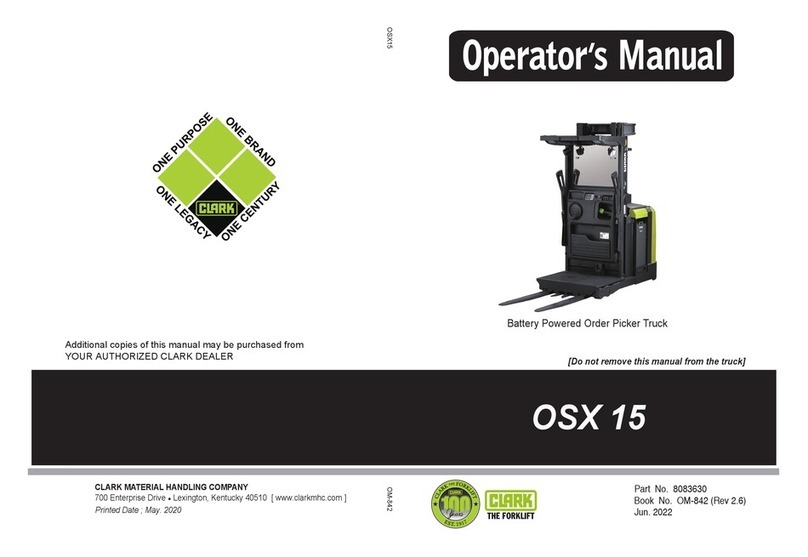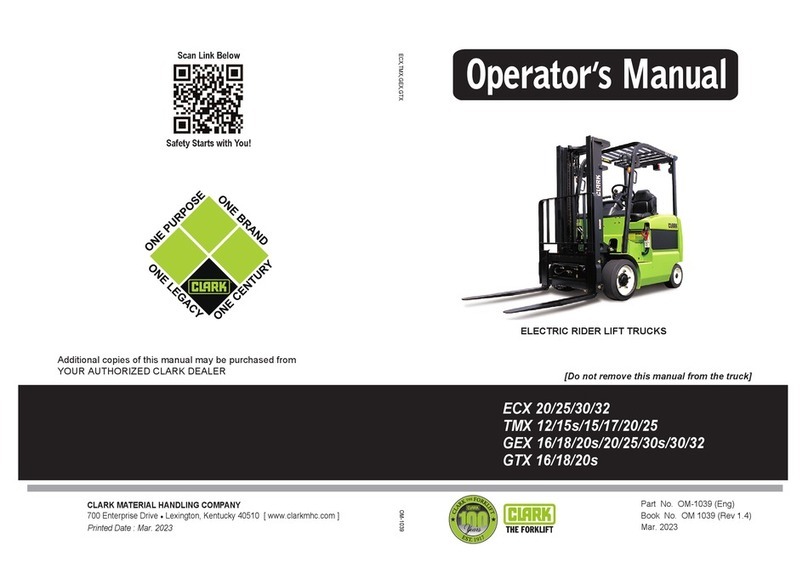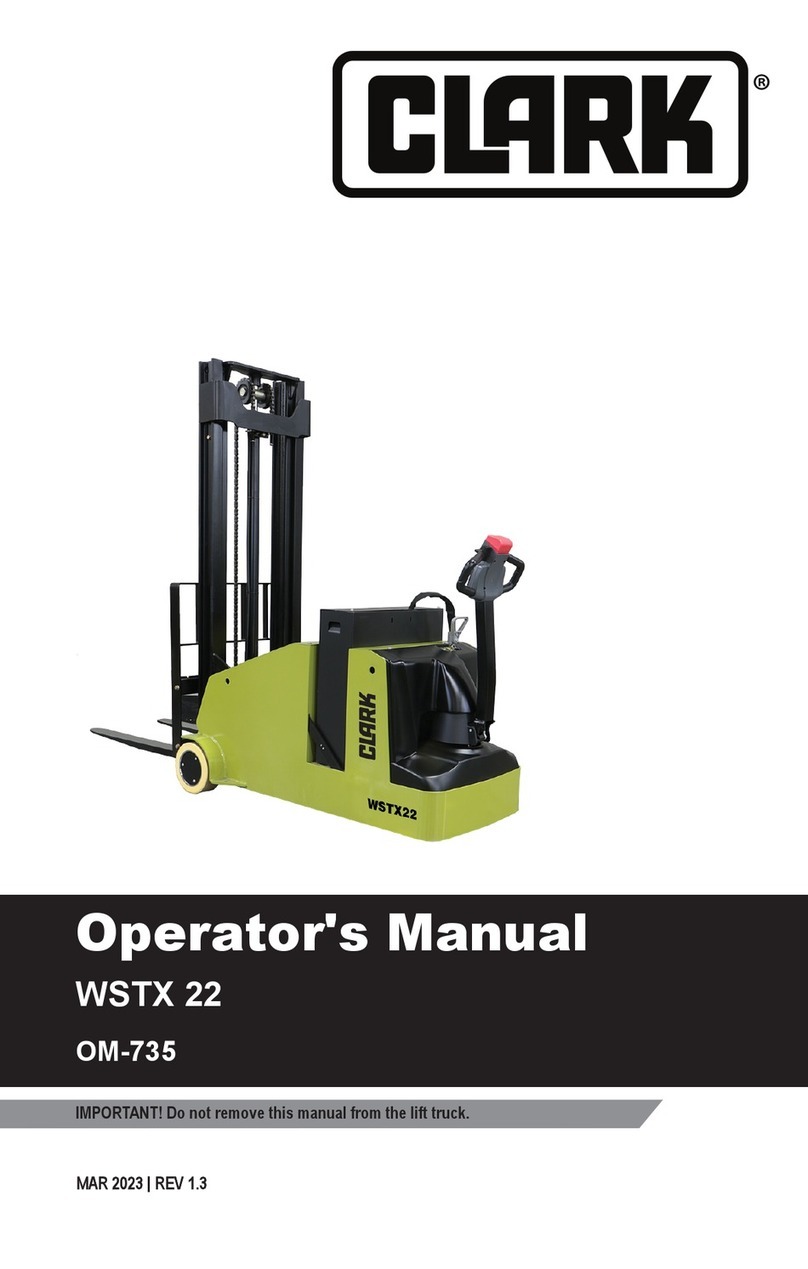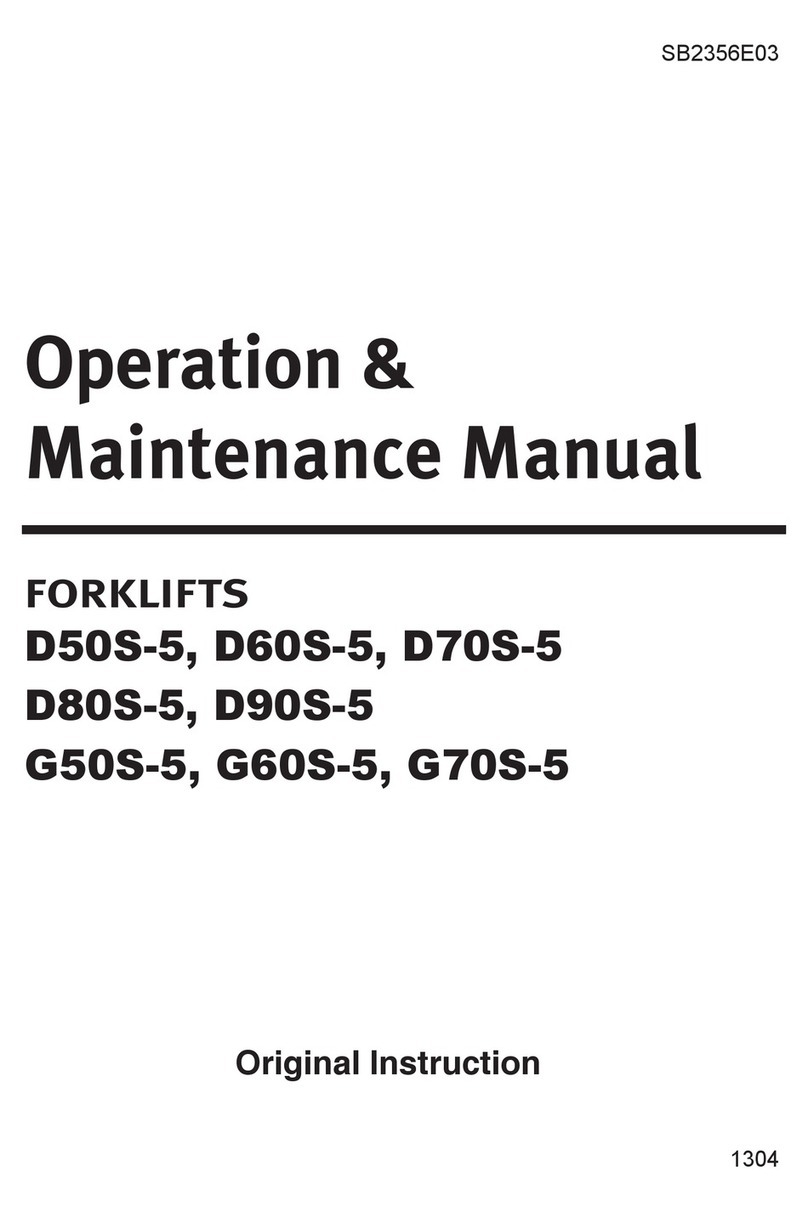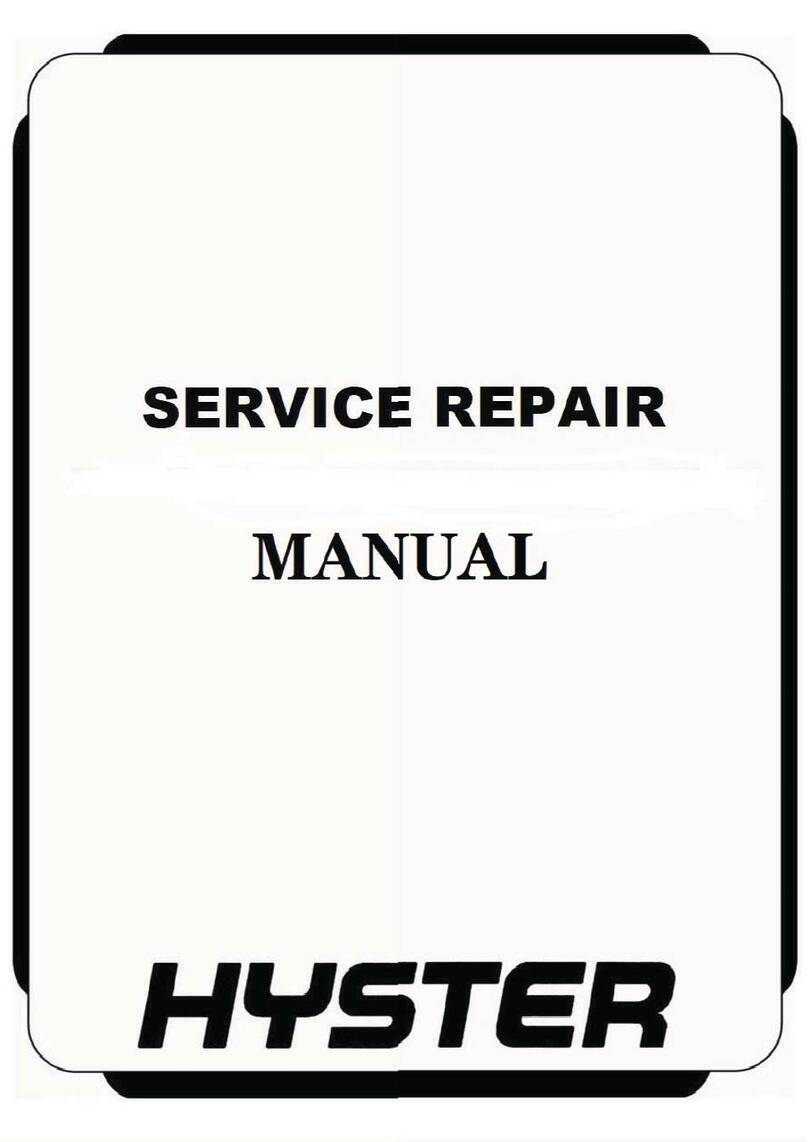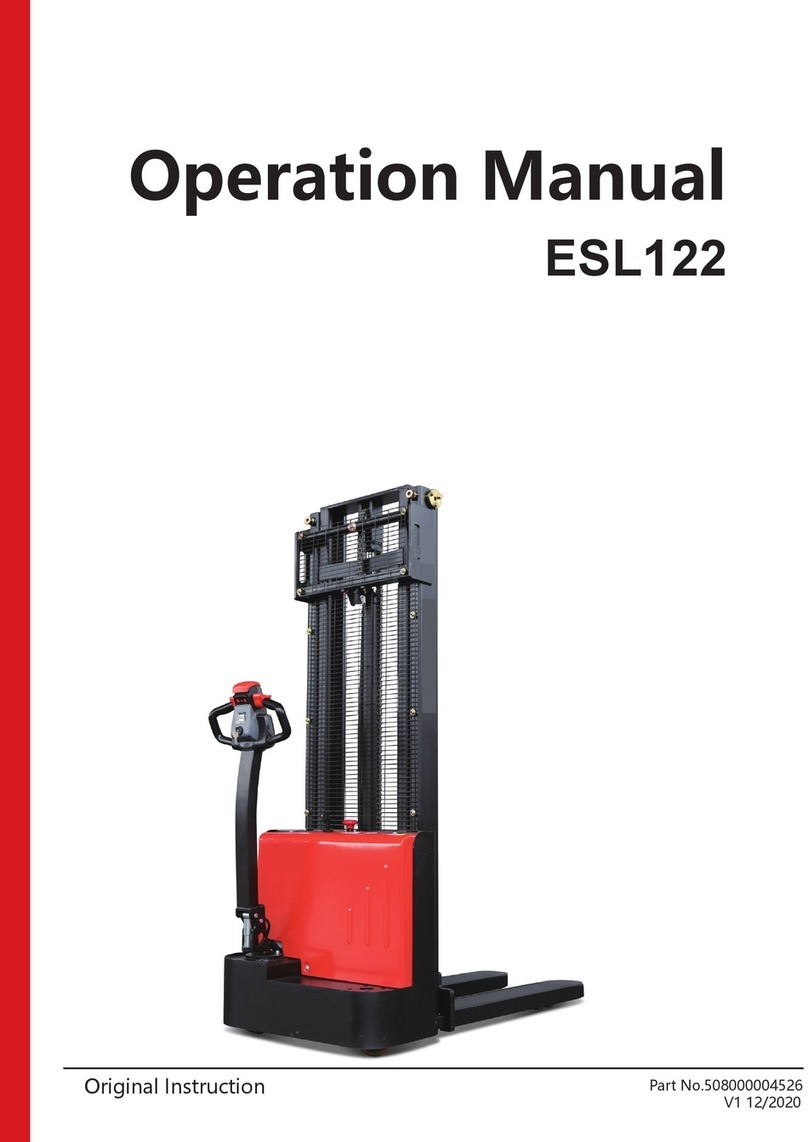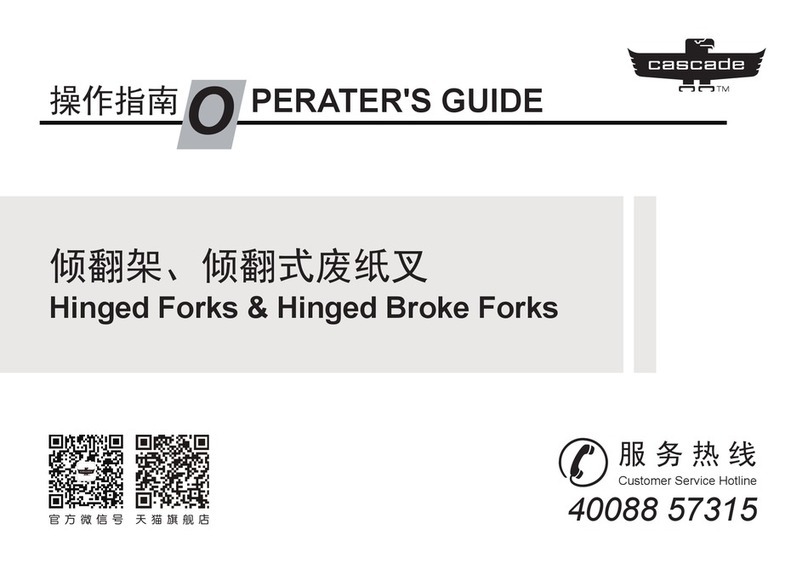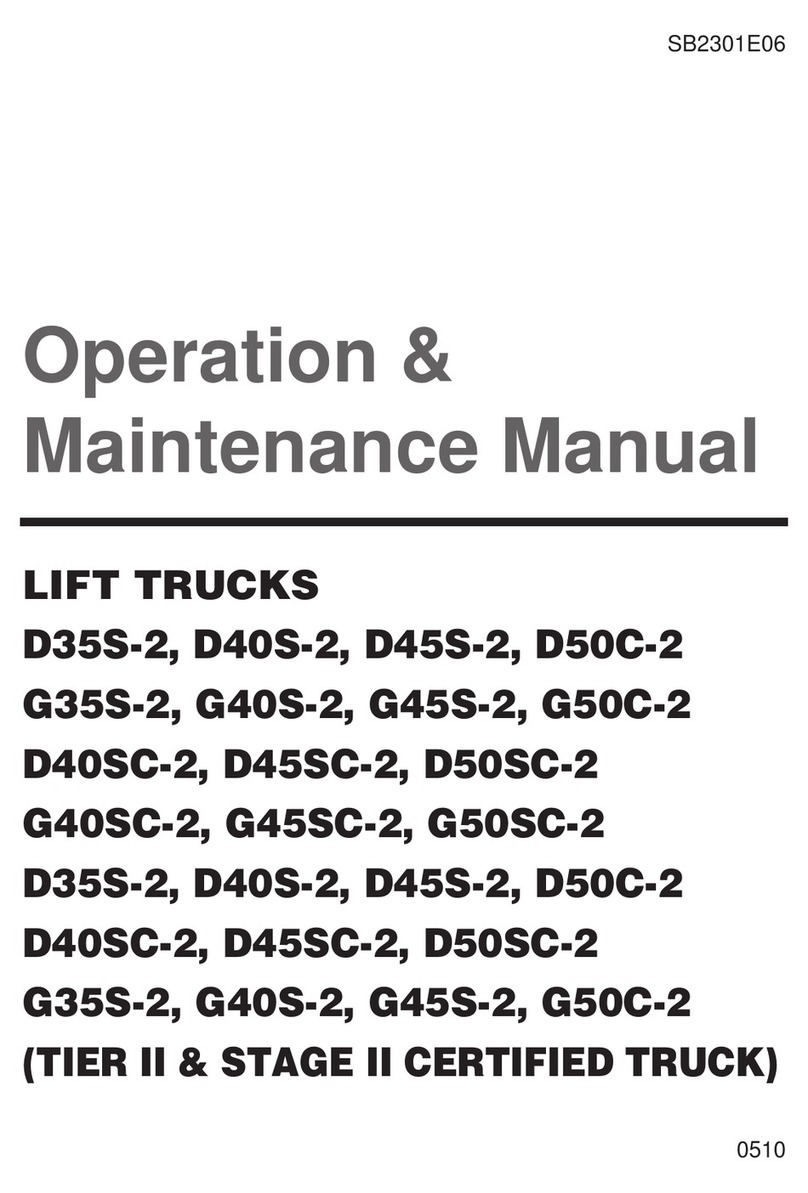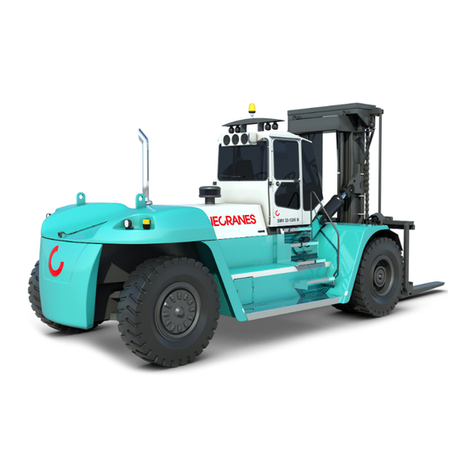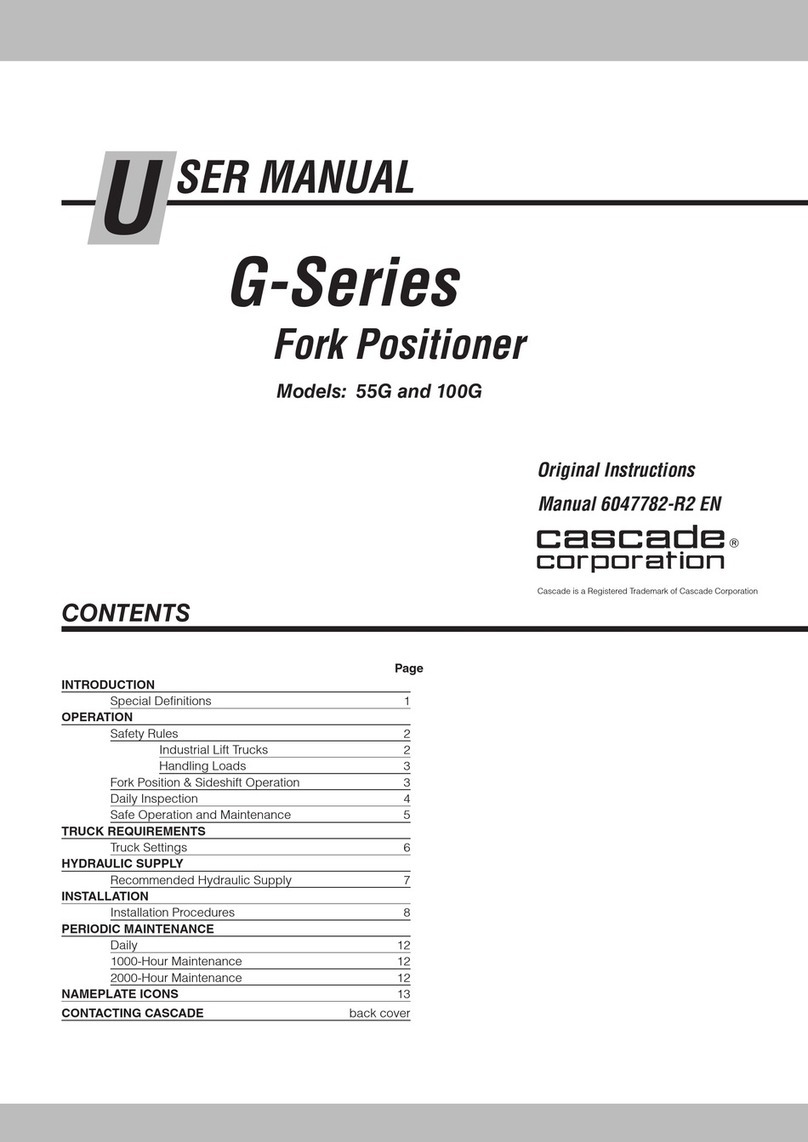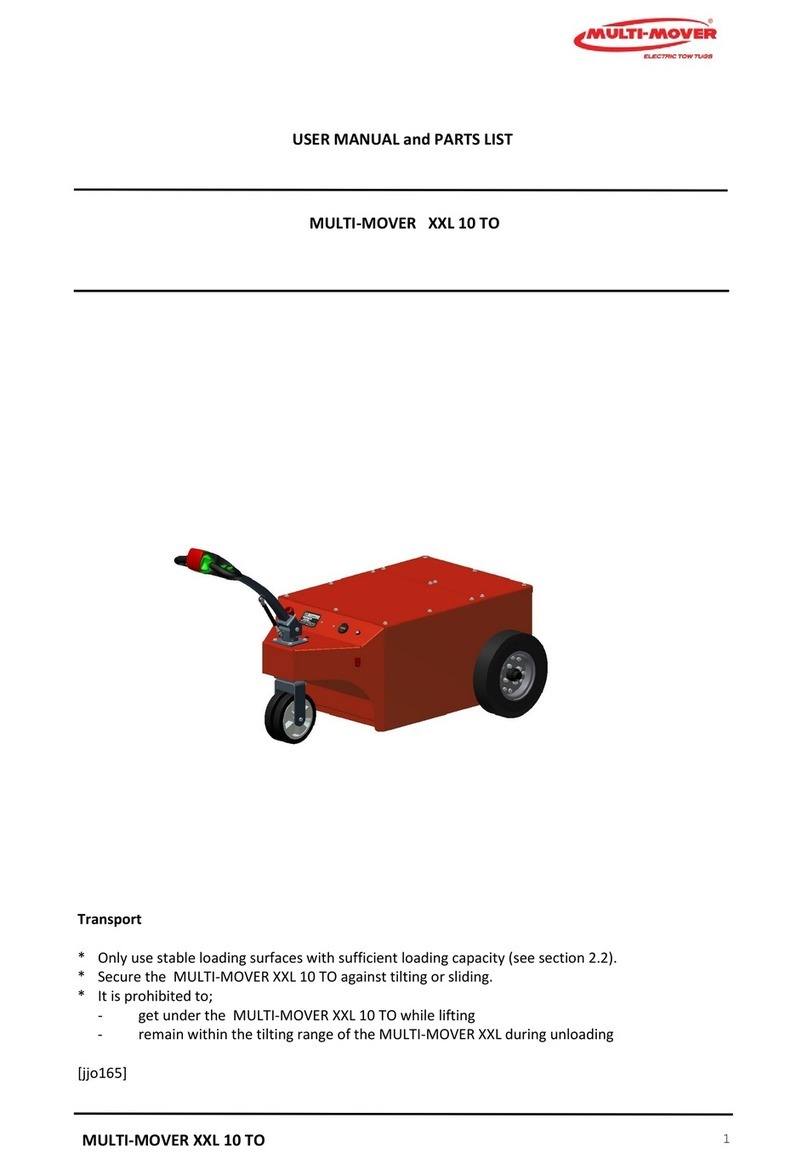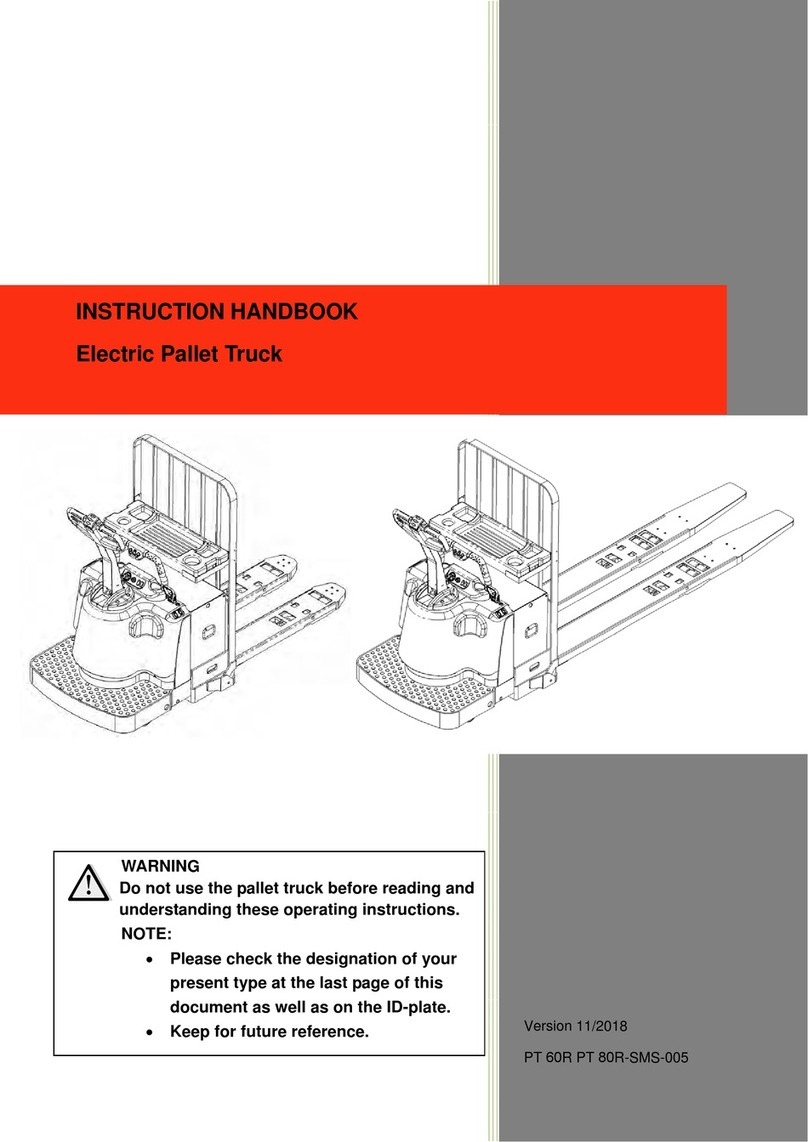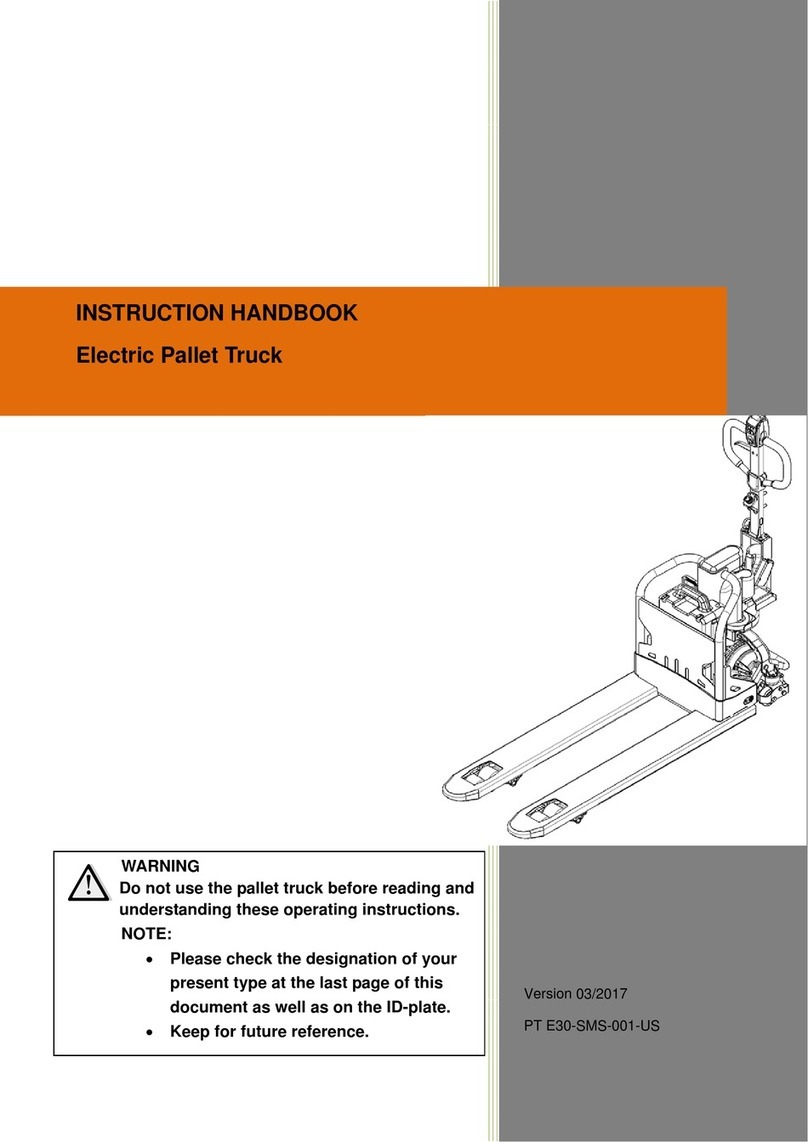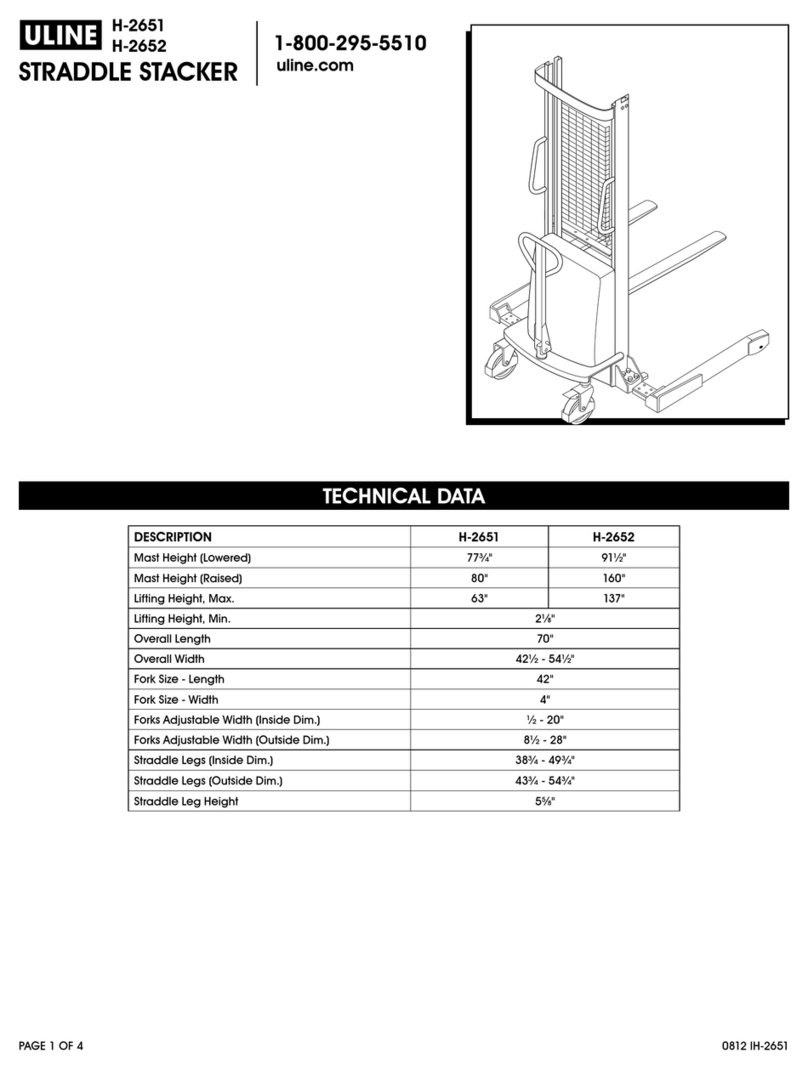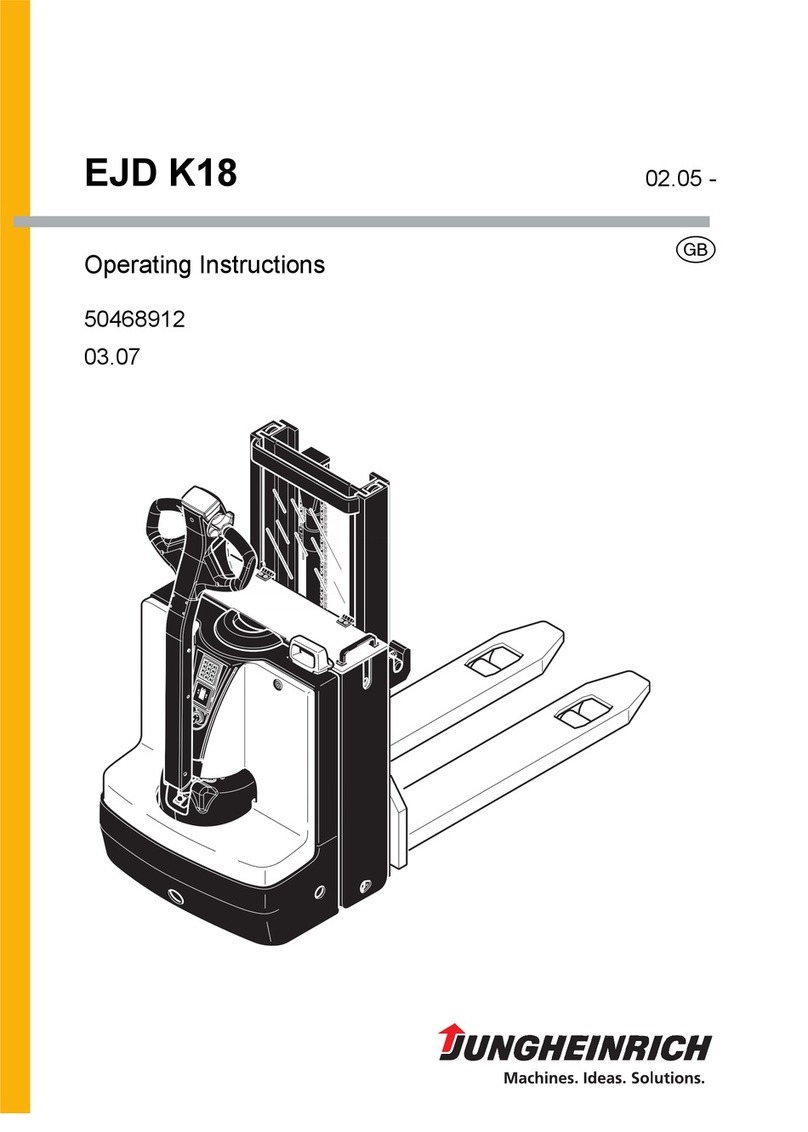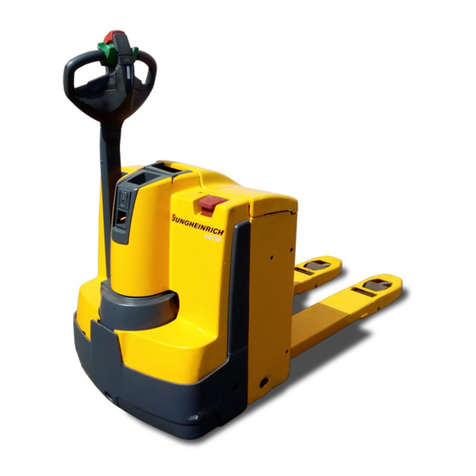
iv
A Message to Lift Truck Operators
Lift trucks are specialized machines with unique operating characteristics,
designed to perform a specic job. Their function and operation is not like
a car or ordinary truck. They require specic instructions and rules for safe
operation and maintenance.
The safe operation of lift trucks is a primary importance to CLARK. Our
experience with lift truck accidents has shown that when accidents occur
and people are injured or killed, the most common causes are:
• Improperly trained operator
• Inexperienced operator, unfamiliar with lift truck operation
• Basic lift truck safety rules NOT followed
• Lift truck NOT maintained to a safe operating condition
For these reasons, CLARK wants you to know how to safely operate and
properly maintain your lift truck.
This manual is designed to assist you in operating your lift truck safely. This
manual shows and describe correct safety inspections and important general
safety rules and hazards of lift truck operation. It shows and explains the
special components and features of your specic truck and it's functions.
The correct operating procedures are shown and explained. Illustrations and
important safety messages are included to provide a clear understanding.
A specic section detailing the proper maintenance and correct lubrication
is included for the lift truck mechanic.
The operator’s manual is not a training manual. It is a guide to help trained
and authorized operators safely operate their lift truck by emphasizing and
illustrating the correct procedures. This manual cannot cover every possible
situation that could result in an accident. You must be aware of possible
hazards in your specic work areas and make sure to correct or avoid them.
It is important that you know and understand the information in this manual
and that you understand and follow your company's safety rules. Make sure
that your lift truck is maintained in a safe, properly working condition. Do not
operate a damaged or malfunctioning truck. Practice safe operation every
time you use your lift truck.
